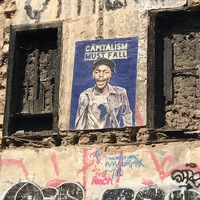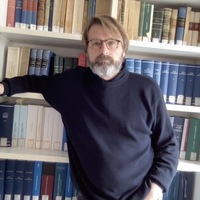Call for Papers by Elizabeth JEREM

From Strategies to Practice in the Protection and Promotion of Archaeological Landscapes
New tec... more From Strategies to Practice in the Protection and Promotion of Archaeological Landscapes
New technologies and methodological advances of the last few decades have radically changed the potentials of archaeological research. The focus has shifted from investigations of single sites to studies of broader archaeological landscapes. In particular, remote sensing technologies and geophysics have yielded vast amounts of new archaeological data, opening new avenues to the better understanding of archaeological sites, landscapes, regions and beyond.
This process has however raised also two important issues, which call for discussion: (1) the often (too) superficial interpretations of the data, and (2) the long-term impact of the new data on decision-making processes in European heritage management. Both issues are closely connected. The lack of depth in interpretation often means that we fail to realize the broader potentials in the use of the data collected. The missing awareness of these possibilities also constrains the process of developing new, more efficient heritage management tools. However, it also due to the lack of closer cooperation between science, heritage protection and politics that is hindering more profound advances.
As a response, several initiatives are focusing on development of new approaches and strategies to tackle the present situation. Unfortunately, these strategies are often solely restricted to a project’s research area or/and its duration and are not implemented on any political or legislative level.
In this session, we would like to hear from your positive as well as the negative experiences and practices in the strategic planning and implementation processes, dealing in the broadest sense with the management of archaeological landscapes.
Papers by Elizabeth JEREM
Eine aussergewöhnliche Grabausstattung aus dem urnenfelderzeitlichen Gräberfeld von Sopron-Krautacker
Budapest régiségei, 2002
... Krautacker = An Unusual Grave Installation from the Urnfield Necropolis of Sopron-Krautacker.... more ... Krautacker = An Unusual Grave Installation from the Urnfield Necropolis of Sopron-Krautacker. Auteur(s) / Author(s). JEREM Erzsébet (1) ; NEBELSICK Carola Metzner (2) ; Affiliation(s) du ou des auteurs / Author(s) Affiliation(s). ...

New insights on Celtic migration in Hungary and Italy through the analysis of non-metric dental traits
PLOS ONE
The Iron Age is characterized by an extended interweaving of movements by Celts in Europe. Severa... more The Iron Age is characterized by an extended interweaving of movements by Celts in Europe. Several waves of Celts from Western and Central Europe migrated southeast and west from the core area of the La Téne culture (between Bourgogne and Bohemia). Through the analysis of non-metric dental traits, this work aims to understand the biological relationship among Celtic groups arrived in Italy and the Carpathian Basin, as well as between local populations and Celtic newcomers. A total of 10 non-metric dental traits were analyzed to evaluate biological affinities among Celts (Sopron-Krautacker and Pilismarót-Basaharc) and Scythians-related populations from Hungary (Tápiószele), Celts from continental Europe (Switzerland and Austria), two Iron Age Etruscan-Celtic sites from northern Italy (Monterenzio Vecchio and Monte Bibele), 13 Iron Age central-southern Italic necropolises, and the northern Italian Bronze Age necropolis of Scalvinetto. Strontium isotopes were measured on individuals fr...
Das älterurnenfelderzeitliche Grab 159 aus Sopron-Krautacker

The Iron-Age-Danube project (Monumentalized early iron age landscapes in the Danube river basin),... more The Iron-Age-Danube project (Monumentalized early iron age landscapes in the Danube river basin), co-financed by the Interreg Danube Transnational programme, is focused on the research, protection and sustainable touristic use of the archaeological heritage from the Early Iron Age in the Danube region. In the frame of the project two strategies, one on research and heritage protection and other on heritage promotion and touristic usage of archaeological landscapes, have been adopted. The strategies are combining a bottom-up analytical approach by incorporating the SWOT analysis from the eight micro-regions in four countries with a to-down approach by integrating the recommendations of the European Cultural Heritage Strategy for the 21st century (Strategy 21). The analysis showed 24 major challenges faced by the Iron-Age heritage, which can be tackled by 12<br> recommendations in the field of research and monument protection and 9 recommendations in the field of sustainable cul...

The Iron-Age-Danube project (Monumentalized early iron age landscapes in the Danube river basin),... more The Iron-Age-Danube project (Monumentalized early iron age landscapes in the Danube river basin), co-financed by the Interreg Danube Transnational programme, is focused on the research, protection and sustainable touristic use of the archaeological heritage from the Early Iron Age in the Danube region. In the frame of the project two strategies, one on research and heritage protection and other on heritage promotion and touristic usage of archaeological landscapes, have been adopted. The strategies are combining a bottom-up analytical approach by incorporating the SWOT analysis from the eight micro-regions in four countries with a to-down approach by integrating the recommendations of the European Cultural Heritage Strategy for the 21st century (Strategy 21). The analysis showed 24 major challenges faced by the Iron-Age heritage, which can be tackled by 12<br> recommendations in the field of research and monument protection and 9 recommendations in the field of sustainable cul...
On the Road to Reconstructing the Past. Computer Applications and Quantitative Methods in Archaeology, 2010
Reconstructing ancient landscapes is an interpretative and open process. It is often required by ... more Reconstructing ancient landscapes is an interpretative and open process. It is often required by users’ expectations, but archaeological research can also benefit from an interactive, three-dimensional and multidisciplinary approach, if used to analyse, interpret and reconstruct past landscapes. Reliable results can be achieved if a scientific method is applied and an explicit theoretic pipeline is followed. The development and the use of interactive, updatable 3D tools are therefore appropriate, while on-line cooperative environments – based upon spatial references – might offer adequate space for research on interpretation and reconstruction. Internet publication seems appropriate for their specific results, especially if transparency problems are taken into account
Transition from early to middle La Tène, continuity or change ? (The settlement network evidence)
Études Celtiques, 1991
An early Celtic pottery workshop in North Western Hungary: Some archaeological and technological evidence
Oxford journal of archaeology, 1984
... Stamp-decorated wheel-turned ware was produced throughout. ... the observations made during t... more ... Stamp-decorated wheel-turned ware was produced throughout. ... the observations made during the exca-vation of each kiln allows a composite picture to be built up reflecting their recon-struction and technological character-istics (Jerem 1983, and Kardos-Kriston 1983). ...
Anthracological investigations at Sopron-Krautacker (NW-Hungary)
Archaeometry 98: proceedings of the 31st …, 2002
Edited by ERZSÉBET JEREM and WOLFGANG MEID
webspersoais.usc.es
... La categoría del tiempo se introduce de esta forma en el pensamiento mítico como medio necesa... more ... La categoría del tiempo se introduce de esta forma en el pensamiento mítico como medio necesario para mostrar las relaciones entre otras ... De esta época es el Bundahin (o &#x27;instalación original&#x27;), texto pahlaví que contiene el relato más completo relativo a la creación y orden ...
Iron Age horse burial at Sopron-Krautacker (NW Hungary). Aspects of trade and religion
ANREITER, P., BARTOSIEWICZ, L., JEREM, E. & MEID …, 1998
Budapest Régiségei 36. Budapest Történeti Múzeum, 2002
der Artikel stellt eine ungewöhnliche Grabausstattung mit Waffenbeigabe der jüngeren Urnenfelderz... more der Artikel stellt eine ungewöhnliche Grabausstattung mit Waffenbeigabe der jüngeren Urnenfelderzeit (HaB1) aus dem Brandgräberfeld der Mitteldanubischen Urnenfelder Kultur von Sopron-Krautacker, Westungarn, vor und beschäftigt sich mit dem Thema rituelle Gewalt im bestattungskontext.
The article introduces a weapon grave of the 10 c. BC from the Urnfield culture cemetery of Sopron-Krautacker in western Hungary and addresses the question of ritual violence in late Bronze Age burial rituals.











Uploads
Call for Papers by Elizabeth JEREM
New technologies and methodological advances of the last few decades have radically changed the potentials of archaeological research. The focus has shifted from investigations of single sites to studies of broader archaeological landscapes. In particular, remote sensing technologies and geophysics have yielded vast amounts of new archaeological data, opening new avenues to the better understanding of archaeological sites, landscapes, regions and beyond.
This process has however raised also two important issues, which call for discussion: (1) the often (too) superficial interpretations of the data, and (2) the long-term impact of the new data on decision-making processes in European heritage management. Both issues are closely connected. The lack of depth in interpretation often means that we fail to realize the broader potentials in the use of the data collected. The missing awareness of these possibilities also constrains the process of developing new, more efficient heritage management tools. However, it also due to the lack of closer cooperation between science, heritage protection and politics that is hindering more profound advances.
As a response, several initiatives are focusing on development of new approaches and strategies to tackle the present situation. Unfortunately, these strategies are often solely restricted to a project’s research area or/and its duration and are not implemented on any political or legislative level.
In this session, we would like to hear from your positive as well as the negative experiences and practices in the strategic planning and implementation processes, dealing in the broadest sense with the management of archaeological landscapes.
Papers by Elizabeth JEREM
The article introduces a weapon grave of the 10 c. BC from the Urnfield culture cemetery of Sopron-Krautacker in western Hungary and addresses the question of ritual violence in late Bronze Age burial rituals.
New technologies and methodological advances of the last few decades have radically changed the potentials of archaeological research. The focus has shifted from investigations of single sites to studies of broader archaeological landscapes. In particular, remote sensing technologies and geophysics have yielded vast amounts of new archaeological data, opening new avenues to the better understanding of archaeological sites, landscapes, regions and beyond.
This process has however raised also two important issues, which call for discussion: (1) the often (too) superficial interpretations of the data, and (2) the long-term impact of the new data on decision-making processes in European heritage management. Both issues are closely connected. The lack of depth in interpretation often means that we fail to realize the broader potentials in the use of the data collected. The missing awareness of these possibilities also constrains the process of developing new, more efficient heritage management tools. However, it also due to the lack of closer cooperation between science, heritage protection and politics that is hindering more profound advances.
As a response, several initiatives are focusing on development of new approaches and strategies to tackle the present situation. Unfortunately, these strategies are often solely restricted to a project’s research area or/and its duration and are not implemented on any political or legislative level.
In this session, we would like to hear from your positive as well as the negative experiences and practices in the strategic planning and implementation processes, dealing in the broadest sense with the management of archaeological landscapes.
The article introduces a weapon grave of the 10 c. BC from the Urnfield culture cemetery of Sopron-Krautacker in western Hungary and addresses the question of ritual violence in late Bronze Age burial rituals.